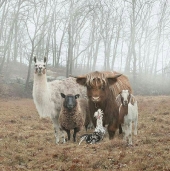There will be more updates to come, I have just been having a rough go for the past couple months and wasn't able to coppice as much as I wanted to this year, as well as haven't really felt up to making blog posts just yet. Thankfully due to the nature of trees all those stems will just be a little bigger next year so I haven't lost anything in the wait.
Bob - The four you listed are also planted here, the locusts are by far the first to come to coppicing size (we do have some native mulberries here that I wouldn't dare coppice because they have the sweetest berries). I don't have enough of the others for much except small crafts, the focus was on the locusts to reforest and provide bulk fuel. It's good to hear someone else had the same thoughts in planning!
Gray - For overhead pruning of larger branches it's generally recommended to do a 3 cut drop. One small (less than 1/3 diameter) undercut about 4-6" away from the final desired cut, then cut the limb off by cutting through about 1-2" further from the trunk than the undercut, then a cleaning cut as close as you can comfortably get to the branch collar without damaging it. This way when you drop the branch it drops straight down rather than hinging and swinging, and the cleaning cut has almost no weight on it so it can come off cleanly without ripping bark.
Jay - Although I know fuel is the lowest end use of wood by quite a few measures - profitability, lifespan, usability, usefulness, etc. - it is the highest on the survival priority list. Before I can think about using coppice for higher uses I have to take care of my basic human needs first, hence this project. I've been at this self-sufficiency journey for almost 20 years now and I'm still so early in the process it might be disheartening if I wasn't so bent on continuing the path. I will enjoy the time when the woodshed is full and I still have poles left over, but that time isn't coming any time soon. Thanks for everything you do here and thanks for your input on my work! Truly appreciated.








